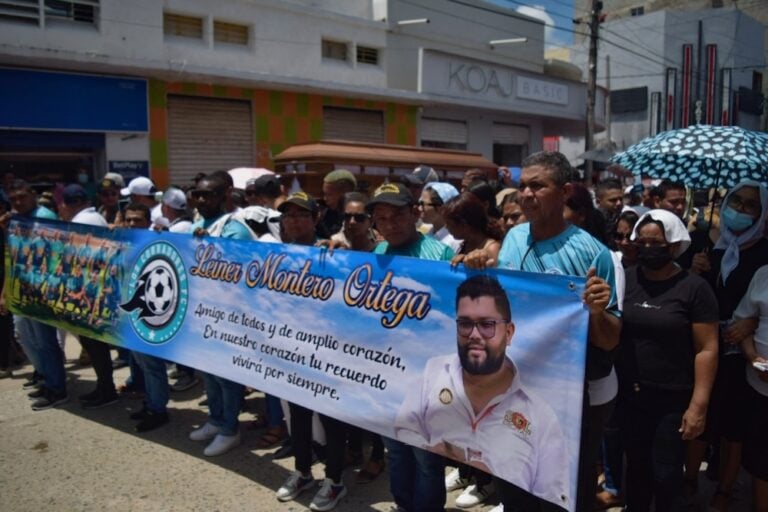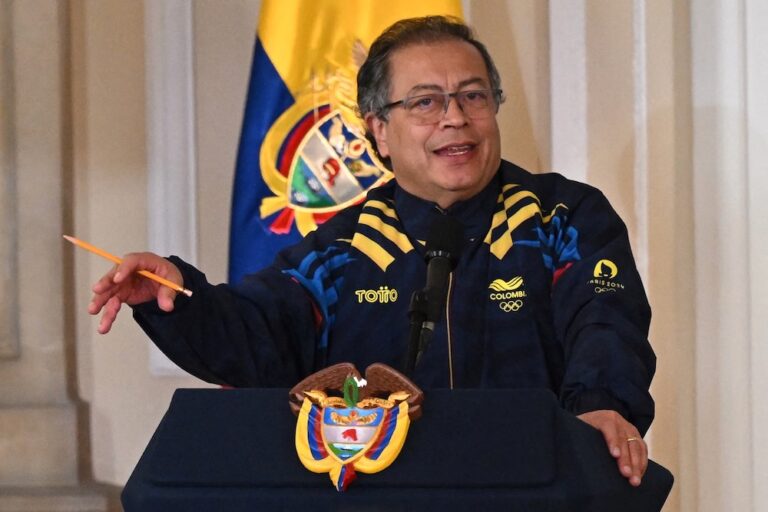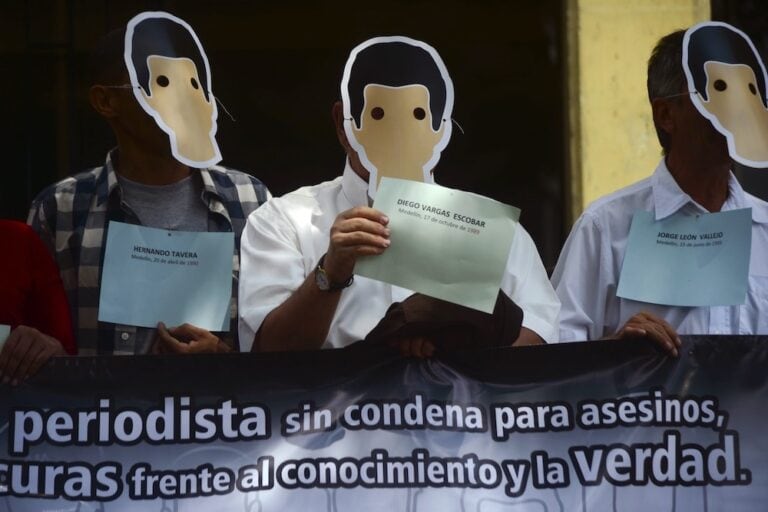(FLIP/IFEX) – On 2 April 2008, several journalists were assaulted and threatened during disturbances in the city of Sincelejo, the capital of Sucre department, in northern Colombia. A reporter narrowly escaped being killed on the spot, while others had guns pointed at them. The incidents occurred during a day-long protest by motorcycle-taxi drivers against a […]
(FLIP/IFEX) – On 2 April 2008, several journalists were assaulted and threatened during disturbances in the city of Sincelejo, the capital of Sucre department, in northern Colombia. A reporter narrowly escaped being killed on the spot, while others had guns pointed at them.
The incidents occurred during a day-long protest by motorcycle-taxi drivers against a new regulation affecting their industry.
During the protest, a group of people began throwing rocks at the police and some stores. Immediately, violent disturbances broke out which left a 17-year-old dead from a stray bullet and 20 other people injured.
Journalists from national and local media outlets arrived on the scene to cover the riot. The demonstrators then attacked them to prevent them from taking photographs or videotaping what was going on.
Humberto Porto Molina, a cameraman for Telecaribe television station’s “Televista” news programme, was on the scene to cover the protest. The demonstrators pointed guns at him and threatened to murder him if he videotaped what was happening. They also seized the video cassette with the coverage he had already filmed.
He managed to escape into the crowd and began to run away. However, the assailants chased after him, pelting him with rocks. He took refuge in a nearby home, whereupon his pursuers waited outside the door of the residence for nearly two hours for him to leave. Neighbours alerted the police to the situation. The police arrived to the home with a tank and rescued Porto Molina.
Journalist Ramiro Erazo, a colleague of Porto Molina’s at “Televista”, commented, “Porto was very anxious because he thought they were going to kill him; he just about had a nervous breakdown.” Erazo added that he too had been covering the protest, but in a different spot, therefore had not been mistreated as had been his colleague. FLIP tried to obtain a comment about the incident from Porto Molina, who declined, saying, “my nerves are shot.”
Johanna Cruz, the head of Cable Noticias cable news channel’s correspondents, told FLIP that her news channel broadcast live the moments in which Porto Molina was hiding in the home. “They were going to kill that boy,” she asserted.
Meanwhile, in another place where the demonstration was in progress, several individuals pointed their guns at Caracol television station correspondent Dayro Hernández and also beat and kicked him, then stole his video camera.
“El Tiempo” newspaper correspondent Oswaldo Rocha, who was near Hernández, was also threatened with a revolver by a protester saying: “If you don’t turn off the camera, I’ll kill you,” while driving by on a motorcycle. Rocha told FLIP that the situation was nerve-wracking, and “it is still very frightening.”
“El Meridiano de Sucre” newspaper’s editor in chief, Elsa Peniche, complained to FLIP that during the protests, people shouted to the reporters: “If the journalists from ‘El Meridiano’ meddle here, we’ll kill them.” Peniche says that the day prior to the protest the moto-taxi-drivers had issued a press release announcing that they would not give information to that particular newspaper.
Colonel Jorge Andrés Rodríguez, the commander of the National Police in Sucre, told “El Tiempo” that amid the demonstrators there had been infiltrators, whom he described as “vandals from elsewhere.” However, Sincelejo’s mayor said that the infiltrators were “‘milicianos’ (urban residents tied to guerrilla groups) interested in disturbing the relative calm enjoyed by the city,” but he did not specify the particular guerrilla group to which he believed they were tied.
FLIP is concerned about these serious acts of aggression and threats, and urges the authorities to investigate to determine who was responsible for them. It also asks the authorities to protect journalists covering these kinds of protests. FLIP notes that there has been an unfortunate increase in the number of freedom of expression violations during public demonstrations.


